Legislative Changes Affecting HOAs
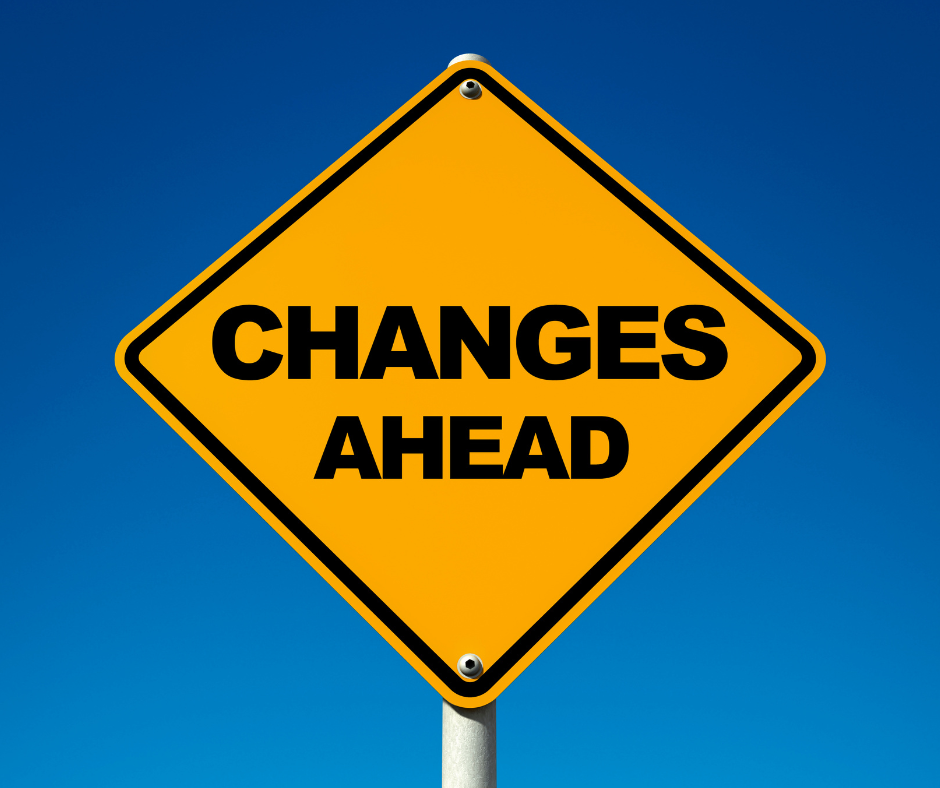
The 2023 legislative session in Minnesota was active, with several significant bills that will impact community associations in the state. Below is an abbreviating listing of those topics. As the laws are further defined and incorporated into daily living in HOAs, we will continue diving deeper into these topics in future newsletters and publications. Marijuana/Cannabis A controversial topic, to be sure, that has been swirling around Minnesota for the past few years became a new law – Minn. Stat. #342. As a part of the comprehensive language passed, specific points related to associations and multi-resident/unit dwellings. We have to look at it in two ways. One issue is smoking, and the second is growing. Associations will have to navigate both problems. What it Says – generally, smoking or vaping in multi-resident/unit housing is unlawful and a nuisance under the statute. Growing is allowed with some limitations (maximum of eight plants). When it comes to growing, it does get a little more complicated. The new law allows people to grow up to eight cannabis plants, with no more than four being mature; flowering plants may be grown at a single residence. Must be the primary residence of a person 21 or older. If outside, it must be (1) enclosed; (2) locked; and (3) not visible to the public. The current law does not reference multi-family/unit developments (HOAs). Whom it Affects – all HOAs What it Means – Vaporizing or smoking cannabis flowers, cannabis products, artificially derived cannabinoids, or hemp-derived consumer products is prohibited in multi-family housing buildings, including balconies and patios. By existing state statute, boards also can govern common areas, including prohibiting smoking or vaping of cannabis products if they so choose. When it comes to growing, the association still controls common areas and can prohibit growing in limited common and common areas. However, they cannot regulate or disallow growing inside of the unit/home. The association’s Declarations would have to be amended to specifically disallow it. That said, the association does have the ability to manage and respond to nuisance issues. Both state statutes and Declarations typically say something to the effect of: Quiet Enjoyment; Interference Prohibited. All Owners and Occupants and their guests shall have a right to peaceful enjoyment in their respective Units. They shall use the Property in such a manner as will not cause a nuisance nor unduly restrict, interfere with, or impede the use of the Property by other Owners and Occupants and their guests. Should the growing of cannabis create issues, such as smell, and other owners complain, the association does have the right to ask an owner to cease the activity that made said nuisance. This issue could become challenging for an association to navigate, and it should seek legal counsel. When it Goes into Effect – July 1, 2023 Summary: our friends at the Smith, Jadin, and Johnson law firm recently spoke to Sharper Manager at length on this issue. An overview of their recommendations is as follows: Send an update to Owners regarding the marijuana bill explaining that as multifamily housing, smoking and vaping are prohibited. Take any complaints seriously and send violations consistent with Rule enforcement procedures. Keep a good paper trail. For complaints lodged, Board will need to know (1) when the alleged violation occurred and (2) who was the violator. If an Owner complains that they “smell” smoke, they can’t send a violation to every Owner. However, a general “reminder” email blast may help paper the file in case of a nuisance lawsuit. If a lawsuit for nuisance arises – 1. If procedures are followed (sent violation), tell Owner you have enforced and that they must drop the case or else the HOA will defend itself and assess fees • 2. If procedures are not followed, settle Solar Panels Like satellite dishes 20 years ago, associations must navigate homeowners wishing to install solar panels on rooflines. This has been a discussion amongst legislative bodies for the past few years. This year it finally got traction, and Minn. Stat. # 500.216 was passed. The bottom line, the new law limits some associations from prohibiting solar panels on rooflines. What it Says – “Notwithstanding any … homeowners association document, … a private entity must not prohibit or refuse to permit the owner of a single-family dwelling to install, maintain, or use a roof-mounted solar energy system.” Whom it Affects – Single family HOAs and any HOAs where the Owner is responsible for maintaining and insuring the dwelling (roofs, siding). Note that this bill does NOT apply to HOAs with shared roofs (such as a standard townhome). What it Means – Single-family HOAs may want to create a policy that could set parameters, requirements, and approval processes around solar panels. Examples include: Require only licensed contractors; prohibit materials extending beyond rooflines; require Owners to indemnify the HOA for any damages; require Owners remove the system if necessary to repair or replace something the HOA maintains. When it Goes into Effect – August 1, 2023 Violations & Rule Enforcement To create more uniformity in how rule violations are notified, fines assessed, and appeals processed, the Minnesota Common Interest Ownership Act (MCIOA) was amended to develop further standards. What it Says – any fine associated with a rule violation has to meet seven specific criteria, or it could be challenged in court. Homeowners are also entitled to a more consistent process for an appeal and hearing of said fine. Whom It Affects – all associations currently under MCIOA, which is any association built after June 1, 1994, and any condominium association regardless of when it was established. What it Means – Any fine and specific assessments must be accompanied by a dated, written notice to the Owner, including seven pieces of information. (1) states the amount and reason for the fine or assessment (2) for fines levied under section 515B.3-102(a)(11) [VIOLATION OF GOVERNING DOCUMENTS], specifies (i) the violation for which a fine is being levied and the date of the levy; and (ii) the specific section of the declaration, bylaws, rules, or regulations allegedly violated; (3) for assessments levied under section 515B.3-115(g) or
Construction Chat: Navigating a Bad Ice Dam Year
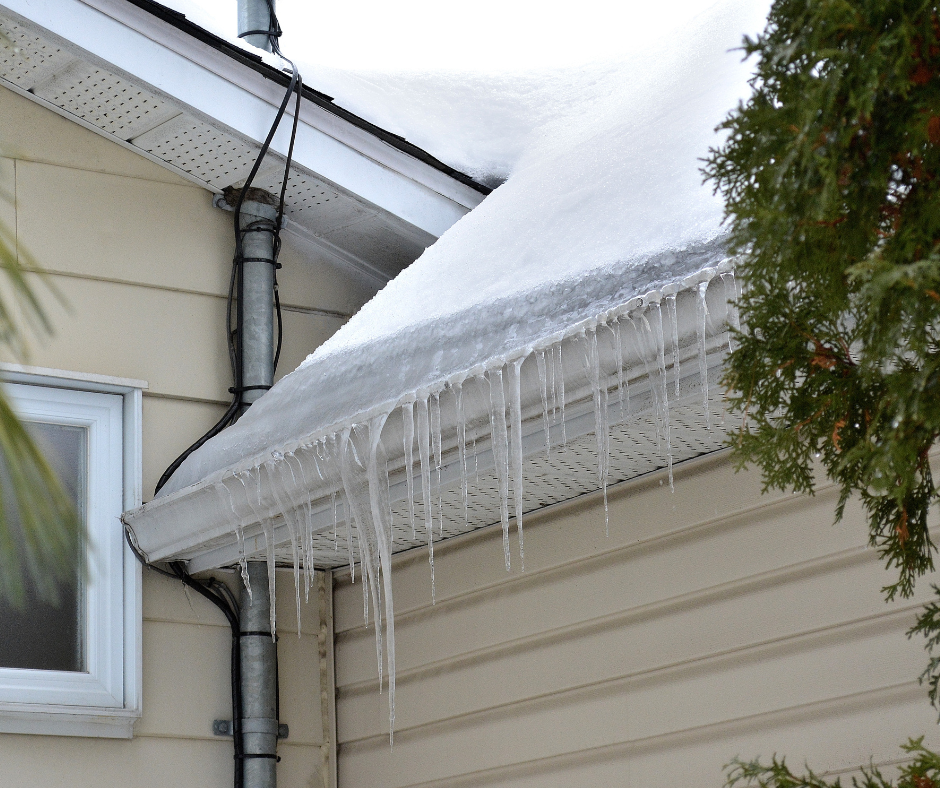
The up-and-down temperatures, rare January rain storms, and the record-breaking snow totals we’ve experienced so far this brutal winter have been the perfect recipe for ice dam formation on various types of roofs. Ice dams are particularly tricky for Associations because the line between Homeowner vs. Association responsibility can become rather blurred. First, it is important to understand how ice dams form. In short, they form when the snow melts on your roof and then re-freezes over the eave—typically over the soffit area. The ice “dam” then prohibits further melting snow to drain properly off the roof, which can (but not always) cause leaking water into the home. There are many factors as to why ice dams form. The inevitable freeze/thaw cycle; excess snow pack; clogged gutters, or frozen downspouts; – but the primary culprit is excessive heat loss from the unit and/or a lack of ventilation. This is why, many times and depending on your Governing Documents, ice dams and the leakage they can cause is not necessarily the Association’s responsibility. They are NOT caused by roofing deficiencies. They are caused by insulation and ventilation deficiencies INSIDE of the home. It is important to understand how your Association’s Governing Documents define “unit boundaries.” Does the boundary of the unit include “unfinished surfaces” or “no upper or lower boundaries?” If so, this could imply that the attic space (or the space between the roof deck and the ceiling) and insulation inside of it would be a homeowner’s responsibility; therefore, the heat loss causing the ice dam is the homeowner’s deal. Once there is an understanding of who is responsible for what, it is very helpful for the associations to review their ice dam situation and have a policy in place for how they are to be addressed. It is also important to have an awareness of the history of ice dams and potential leakage. Sometimes the worst-looking ice dam you’ve ever seen will not cause any leakage (suggesting roofs have extra layers of “ice and water shield” membrane under the shingles). And sometimes, where you might not be able to see an ice dam at all, a unit has a faucet coming into their unit at the exterior wall line. Knowing if your Association has a history of LEAKING ice dams is important to know as you make a decision on how (or IF) the Association addresses them.
Snow Removal Reminders
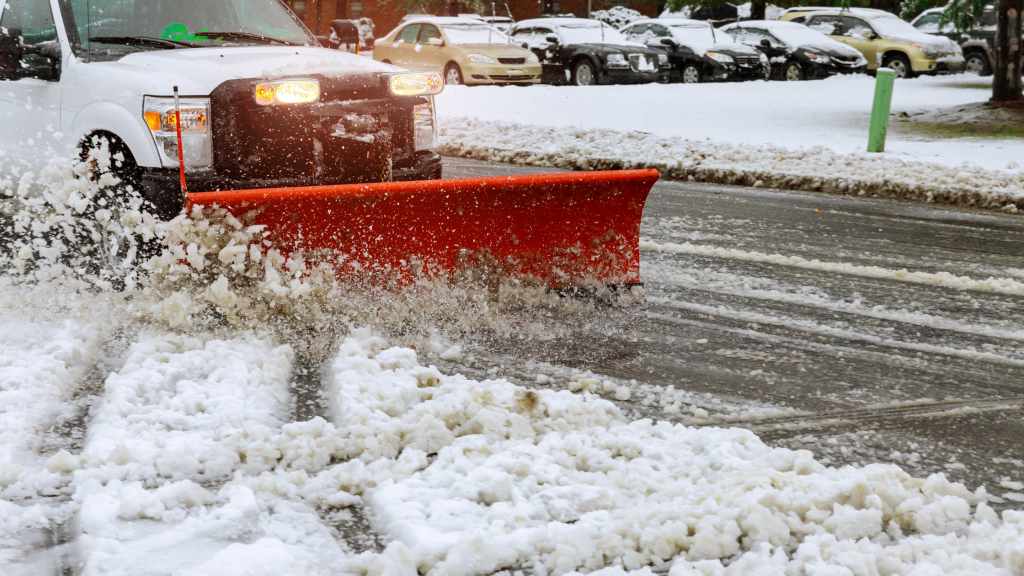
The snow has begun to fall. We would like to remind everyone about factors that may come into play during a snow event. Trigger Depth Most HOA contracts will state an accumulation total that must be met before snow removal services commence. For most places, the trigger depth is between 1-2 inches of snow. Accumulations Your contract’s definition of “trigger depth” is extremely important. Depending on the wording, trigger depth can be met when all the snow on the ground is at or above a certain amount. In other cases, trigger depth might only apply to “single-event” storms; this method disregards how much snow is already on the ground and only measures how much new snow has fallen. If the amount of new snow is less than the trigger depth, snow removal will not occur. It is important to know the difference between these plans and which one you have; if there are five consecutive snowstorms where less than 1 inch falls, and you have a single-event contract, snow removal services will not be triggered. Most contracts are written, “by event.” Timing The second most important clause of your contract is when the snow removal service must be completed. In most cases, “final cleanup” is required between 6 – 12 hours after the snow has stopped falling. Sometimes, the timeline can change based on how much snow has accumulated. The more snow that falls, the more time is allowed for cleanup. Open-ups Open-ups are another clause in the snow removal contract implemented after the snowfall exceeds a particular total. For example, the snow removal company will perform an open-up if 4 inches of snow has fallen and there is still a forecasted 4 inches. They will perform a single pass through the roadways with a plow so that vehicles can enter and exit the complex. A critical section of the open-ups clause to look over is whether open-ups include driveways or just the main roadways. The typical language will state that an open-up will occur before ___ AM and/or after ___PM. It is always good to be prepared for significant snowfalls. We hope you have a safe winter!
Board Tips: Meeting Room Setup

As some associations resume in-person meetings, one thing to consider going in to your 2023 meeting schedule is the oftentimes overlooked detail of simply how the room is set up. Remember, a board meeting is a BOARD meeting. It is not a membership/homeowner meeting. Homeowners can be there for observation or to address the board during an allocated open forum part of the meeting. Outside of that, interaction should be between board members. How are most board meeting rooms set up? Usually, some form of auditorium style seating, right? The board sits in a row at a head table facing chairs lined in rows. It invites participation from the audience, gives the impression the board is reporting to the audience, but hinders eye contact–and thus interaction–between board members. Another setup we commonly see is a round table room. The physical setup of that puts no barrier between the board and membership and makes it feel all-inclusive. It’s a nice sentiment, but not a good way to run a business meeting of the board. The best setup you can create is some form of a U- or V-shaped table for the board, and audience-style seating for homeowners. This way, no one’s back is to the audience, but interaction and eye contact is crossed between board members. Most city hall and other government meeting rooms are set up this way for a reason. If you have difficulty controlling interaction between board members and homeowners, try this type of board meeting setup. Little things can make a big difference!
Board Training Opportunity – Jan 18, 2023

Sharper Management will present the first in a series of board training opportunities on Wednesday, January 18, 2023, 6 p.m. at the Wells Fargo Plaza, 2nd Floor Training Room at 7900 Xerces Avenue in Bloomington, MN 55431. The 90-minute session will be led by director of business development and education, Josh Reams, CMCA, AMS, PCAM. This session will focus on defining associations and association meetings. Topics include: Association 101 Defining Different Types & Scopes of Associations Types of Association Meetings Understanding Meeting Requirements Tips & Tricks on Effective Board Meetings If you are interested in reserving your spot, please email clientcare@sharpermanagement.com
Board Training – Section II – October 26
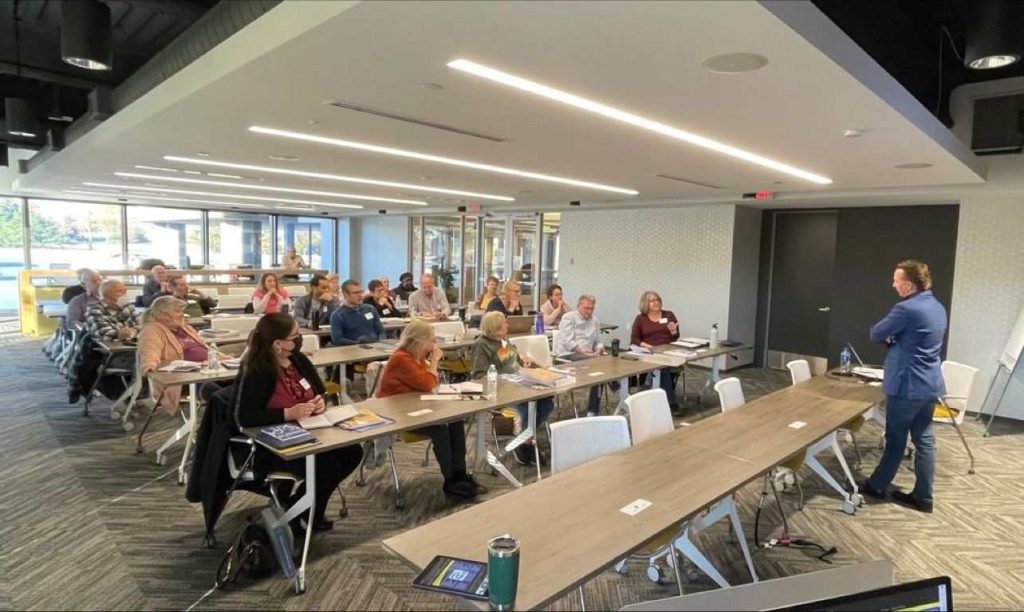
The second section in Sharper’s Board Training program is scheduled for Wednesday, October 26th, 6 p.m. at the Wells Fargo Plaza located at 7900 Xerxes Avenue in Bloomington. This free 90-minute session will focus on financials and insurance. Led by Sharper’s director of business development and education, Josh Reams, – and president of Insurance Warehouse, Eric Skarnes – topics will include: Insurance Basics: Defining Policy Types & Coverages Understanding Deductibles Marketplace Update Financial Fundamentals: Setting & Managing Operating Budgets Reserve Fund Requirements Understanding Reserve Studies Basic Financial Reports Audit/Review & Tax Requirements If you are interested in reserving your spot for this free training opportunity, email clientcare@sharpermanagement.com
Association Funds: Operating vs Reserve

Since most associations are on a calendar fiscal year, your Board of Directors and Management will soon start working hard to establish your 2023 Operating Budget. This budget, essentially, sets your “dues” – so we thought it would be a timely opportunity to explain the difference between the “operating budget” and funds VS the “replacement reserve” schedule and funds. Operating Budget Each association varies, of course, but an overwhelming majority treats operating and reserve (or capital) funds differently. Your association works within an operating budget to pay for your necessities and recognized amenities. These items are set by your Governing Documents. Common examples include lawn care, landscaping, snow removal, insurance, management services, repairs and maintenance, association covered utilities, amenity costs for pools or other recreation, etc. These are the costs to run your association on a day-to-day basis. This budget makes up your monthly/quarterly/annual assessment – commonly called “dues.” Little known fact – for most associations, did you know that your monthly dues payment is technically called an annual assessment? The common practice is to break it up into 12 equal monthly installments and call them “dues.” But, for most associations, the adopted operating budget and your share of those expenses (be it by ownership percentage in a condo or your equally divided share of the planned community) is legally recognized as a yearly assessment. Reserve Fund The association’s reserve, or capital, fund is essentially the savings account to pay for large replacement projects such as re-roofing, re-siding, concrete and asphalt replacement, etc. Most associations work off of a professionally developed Reserve Study that lays out the plan for which components should be replaced which year, and a funding plan to pay for those replacements. So, how do these funds work together? The reserve fund is contributed to via an expense listed in the operating budget. If the Reserve Study says in 2023 the association should contribute $120,000 to the Reserve Fund, typically each month the association will take $10,000 generated from your dues revenue and deposit into the Reserve Fund account. This is a set line item in the operating budget. It’s a lot like a savings and checking account. You deposit your paycheck into your checking account, which you use to pay your regular bills. It’s your “operating account.” You might also plan an amount each month you send to your savings or retirement account to pay for those big expenses down the road. It’s your “reserve account.” Hopefully this helps to explain two very different funds your association is working with!
Having Dogs in an HOA: Rules and Courtesies

Living in a condo or townhome means you need to be respectful of your neighbors, and poorly trained dogs and inattentive owners can cause problems. If you have a dog in your HOA, here are some things to be aware of: Excessive barking It’s inevitable that dogs will bark throughout the day, whether they’re telling you they need to go outside or if they just want some attention. Yelping, whining, or barking for five or more minutes is known as nuisance noise. It can be annoying at any time of day, but it’s especially obnoxious in the early morning hours or late at night. No one likes to be kept awake by a barking dog, so be sure to tend to your dog’s needs. Be aware that the Association could issue rule violations and/or fines if this kind of activity is reported. Cleaning up after your dog After your dog does their business, you need to pick up after them. Associations are strict about picking up after your dogs immediately, and there could be a violation or fee for neglecting to do so. Remember, common areas in your Association are shared areas. They are shared by other residents and they are maintained by service providers. They should not be held responsible, nor have to navigate, your pet’s messes. Leashing your dog In common areas and outside your home, your dog needs to be leashed. Although your dog may be friendly or well trained, there’s no knowing when they’ll be provoked or distracted. Keeping your dog leashed is a safety precaution for you and other residents – and most cities have pet leash ordinance. It’s not just an Association rule – it’s usually a law.
Staying Safe During Storm Season
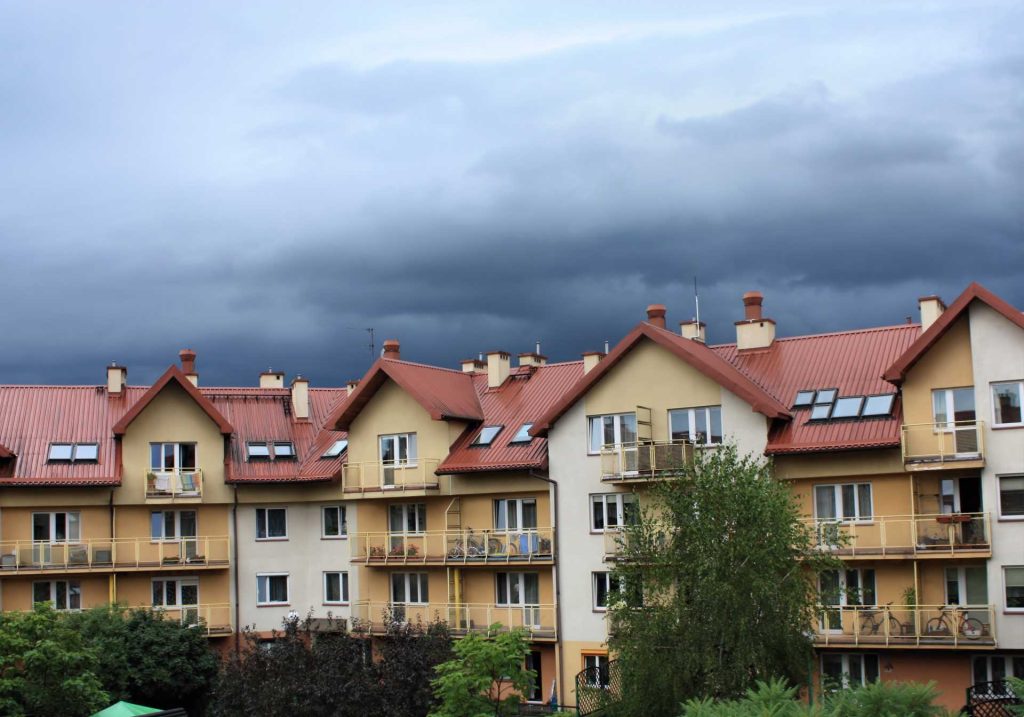
We’ve entered storm season here in the Midwest, so now is a good time to go over some tips for staying safe. In a condo or other high-rise building, there isn’t always a basement or underground parking garage to take shelter in. So, in the case of severe weather, what should you do? No matter if you’re on the top or bottom level, get to an area without windows. You’ll want to get to a room that has as many walls between you and the building’s exterior as possible. Bathrooms or closets are typically the safest options. It’s best to get as low as you possibly can in the building, so get to know your neighbors on the first floor, as you could likely take shelter with them. Your building may have a designated safety area for instances like these, so check with your association. You should also create a safety kit for severe storms in case the power goes out for a long period of time. Include first-aid items, flashlights, emergency contacts, water bottles, and nonperishable food. Checking the weather and knowing when a storm will strike will help keep you safe and give you time to prepare. If you do have covered parking, move your vehicle so that it’s not hit from flying debris outdoors. We hope you stay safe this summer, and we hope for minimal storms!
Staying Organized in Small Spaces
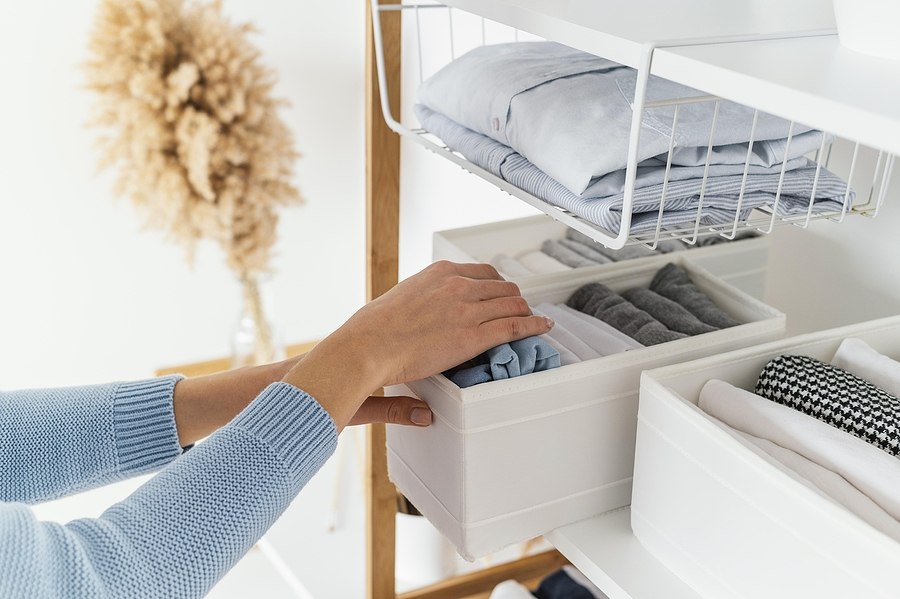
Who said spring cleaning had to wait until the warmer months? Winter is a great time to get your home organized. There isn’t typically an abundance of space in a townhome or condo, however, so keeping your space organized can be difficult when there isn’t much room for storage. These tips should help keep your space free of clutter! Get rid of items you no longer use or want. It’s easy to keep accumulating things, and we often don’t notice until there’s too much stuff. Throwing away or donating your unwanted items is the best place to start when getting things organized. Store things upwards. Rather than buying a short, horizontal shelf, choose the tall, vertical shelf that takes up less room. This is a much better way to utilize space! Raise the beds. This is often done in dorm rooms to make more space for storage—by raising the beds, you’ll have space to put totes and other storage items. Keep functionality in mind. Your dresser can likely double as a TV stand in your bedroom, for example! Create zones. The living room doesn’t have to be just a room to hangout in—add a small kitchen table in the corner if there isn’t room for one in the kitchen, or create a home office in an unused area of your bedroom, for example. Use fridge space. The top of the fridge is a great home for cookbooks, pots, bowls, and even decorations. If you have a blender that you use every few weeks, for instance, keep it on top of the fridge rather than taking up counter space. Use the back of doors. Hanging caddies and even simple hooks can help keep a room organized, especially bathrooms with minimal room around the sink. Maximize closet space. If there’s room for it, putting your dresser in the closet can save you a lot of space in your bedroom. Place seasonal clothes in bins and keep them on shelves until it’s time to swap out your wardrobe for the new season! It’s a good idea to de-clutter a few times a year, typically once every season. This prevents the accumulation of unnecessary items and can keep your home looking organized and clean. Just because you have a small space doesn’t mean that you can’t have all the items you need—it just takes a bit of creativity to fit it all in.
